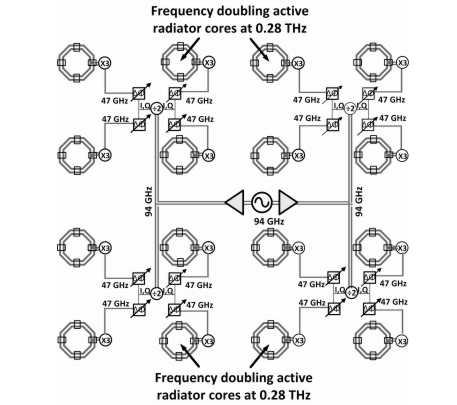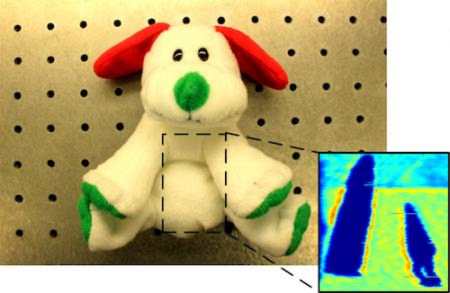| Terahertz Transducer On A Chip Provides X-ray Vision |
| Written by Mike James | |||
| Saturday, 19 January 2013 | |||
|
Terahertz waves - between microwaves and infrared - can be used to see through materials and act as a sophisticated x-ray. Now researchers have managed to create a Terahertz wave source on a chip, opening the door to mobile devices. Terahertz waves are as useful, possibly more useful than traditional x-rays. They penetrate materials in a more subtle way than high powered x-rays that either pass straight through or are stopped by dense bone-like materials. Terahertz waves can be used to look inside packages and detect metal and complex chemicals such as explosives. Terahertz waves are traditionally very difficult to generate, needing large laser type devices and typically very low operating temperatures. Terahertz waves are in the region 0.3 to 3Thz and the big problem is that transistors simply don't work fast enough to generate signals in this region. Caltech professor Ali Hajimiri and post-doc candidate Kaushik Sengupta have invented a very subtle device that uses a CMOS array to generate 0.28Thz waves - just on the low edge of the Terahertz wave band. This isn't new in itself, similar CMOS based chips have been produced that work in the low Terahertz band but this particular chip is scalable and produces a steerable beam. What this means is that by using larger arrays, the power can be increased and the steerable beam makes it possible to scan objects - and given the size of the chip all this can be done in a hand held device, possibly even a mobile phone. The way that it works is that the transistors oscillate at 47Ghz and passive frequency multiplication is used to generate the 282GHz Terahertz waves.
The design evolution of the distributed active radiator (DAR) follows from an inverse design approach, where metal surface currents at different harmonics are formulated in the silicon chip for the desired electromagnetic field profiles. Circuits and passives are then designed conjointly to synthesize and control the surface currents. The DAR consists of a self-oscillating active electromagnetic structure, comprising of two loops which sustain out-of-phase currents at the fundamental frequency and in-phase currents at the second harmonic. The fundamental signal, thus gets, spatially filtered, while the second harmonic is radiated selectively, thereby consolidating signal generation, frequency multiplication, radiation of desired harmonic and filtration of undesired harmonics simultaneously in a small silicon footprint. The phase can be altered to produce a beam steering over 80 degrees in both the horizontal and vertical direction.
Given that there are already Terahertz detection chips the idea of building an "x-ray" style scanner into a portable device is realistic. Perhaps in the near future the Terahertz scanner will be a regular component of smart phones and apps will routinely be able to make a scan that goes deep beneath the skin. More InformationA 0.28THz 4×4 Power-Generation and Beam-Steering Array (pdf) A New Tool for Secret Agents—And the Rest of Us Related ArticlesPlenoptic Sensors For Computational Photography
To be informed about new articles on I Programmer, install the I Programmer Toolbar, subscribe to the RSS feed, follow us on, Twitter, Facebook, Google+ or Linkedin, or sign up for our weekly newsletter.
Comments
or email your comment to: comments@i-programmer.info
|
|||
| Last Updated ( Saturday, 19 January 2013 ) |




